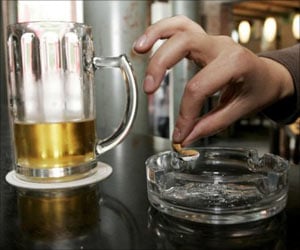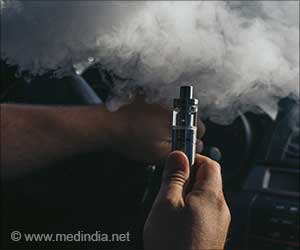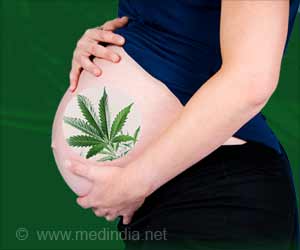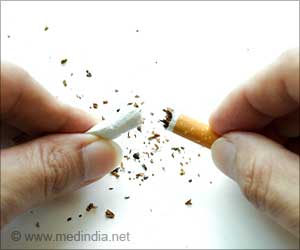Brain factors and behaviours are being studied to find out risk of alcohol use and abuse in teens, even before they start drinking.

The project is directed by John VanMeter, PhD, director of the Center for Functional and Molecular Imaging, and associate professor of neurology at GUMC, and Diana Fishbein, PhD, director of the Center for Translational Research on Adversity, Neurodevelopment and Substance Abuse (C-TRANS) at UMSOM. One abstract provides new evidence that adolescents at higher risk of alcoholism have reduced connections in key brain networks; another links impaired brain connections to impulsivity; and two abstracts examine impulsivity in relation to sugar intake and intake of DHA, an essential omega-3 fatty acid.
"What this study is attempting to do is identify the differences in the brains of adolescents who go on to misuse alcohol and other drugs," says VanMeter. "If we know what is different, we may be able to develop strategies that can prevent the behavior." The studies were conducted with a participant pool of 135 preteen and teenage boys and girls with an average age of 12.6 years. All underwent structural and functional MRI to investigate the connection between brain development and behavior.
Other tools the researchers used include questionnaires and several tests of neurocognitive function, including two tests used specifically while adolescents were scanned -- the Continuous Performance Task (CPT), which measures impulsivity, and the Temporal Discounting Task (TD), which quantifies preference for immediate rather than delayed reward.
1. Evidence of reduced executive cognitive functioning in adolescents at risk for developing an alcohol use disorder The first study examines a long-standing question: is lack of connectivity in the brain's Executive Control Network (ECN) a contributor to, or the result of, teen alcohol use?
Tomas Clarke, a research assistant and Stuart Washington, PhD, a post-doctoral fellow in VanMeter's laboratory, looked at the association between the Drug Use Screening Inventory questionnaire filled out by the 32 participants' parents and brain connectivity within the ECN, which includes the areas that process emotion, impulsivity and self-control. The questionnaire is predictive of future alcohol misuse. It does not ask parents about their alcohol or drug use but probes social behaviors in their children such as irritability, anger, sadness, etc.
Advertisement
2. Functional connectivity between the insula and anterior cingulate predict impulsivity in adolescents at risk for alcohol misuse The next study examined the levels of impulsivity in relation to the connection between executive control in the prefrontal cortex and the insular cortex, which is involved in processing emotions. Benson Stevens, a graduate student in Georgetown's Interdisciplinary Program in Neuroscience, used the Drug Use Screening Inventory to establish a high/medium risk and a low risk group, each with 17 participants.
Advertisement
3. Relationship between sugar intake, impulsivity and increased sensitivity to immediate rewards in adolescents A third study investigated the relationship between sugar intake -- as reported by participants in a food questionnaire -- and performance on two tests, the CPT and the TD, which measure impulsivity and ability to delay gratification. The CPT was used while participants were being scanned by fMRI. "We know that, compared to healthy individuals, adults with alcoholism have a stronger preference for sweet tastes, are more impulsive and are less able to delay gratification," explains Dana Estefan, a former research assistant in VanMeter's lab who is now a student at New York University. "We wanted to know if this profile fits youth deemed to be at risk for early alcohol use by the Drug Use Screening Inventory. "The TD task confirmed the expected relationship - kids with high amounts of added sugar in their diets preferred immediate rewards more than kids with lower levels of added sugar in their diets. The CPT task revealed that individuals with increased sugar intake also showed greater activation in right superior temporal gyrus and right insula, areas linked to impulsivity and emotional affect.
Their hypothalamus was also highly activated, which, in adults, is linked to overeating, reward seeking and drug addiction, Estefan says. "Our findings could potentially mean a positive correlation between impulsivity and sugar intake in adolescents, but more research needs to be done on this," she says.
4. Relationship between DHA intake and activation of impulse control circuitry in early adolescents Finally, Valerie Darcey, a registered dietitian and a graduate student in the Interdisciplinary Program in Neuroscience, examined the relationship between intake of DHA, an essential omega-3 fatty acid, and impulsivity. DHA, found in cold-water fish, is important for neuronal function. She used a food questionnaire to measure, in 81 participants, ingestion of DHA and arachidonic acid (AA), which is omega-6 fatty acid found in vegetable oil, among other foods. AA competes with DHA for a place in cell membranes, so the more AA consumed, the less DHA is used. Darcey then gave participants the CPT test while scanning their brains with fMRI. "My preliminary findings show that while impulsivity levels are the same for kids with high and low levels of DHA in their diets, the brains of kids with low DHA appear to be more active -- working harder to compensate -- in a region involved in paying attention to the task and a region that participates in executive function," she says. "This tells us that the brains of the kids eating less DHA may not be developing like those eating more DHA."
Source-Eurekalert















